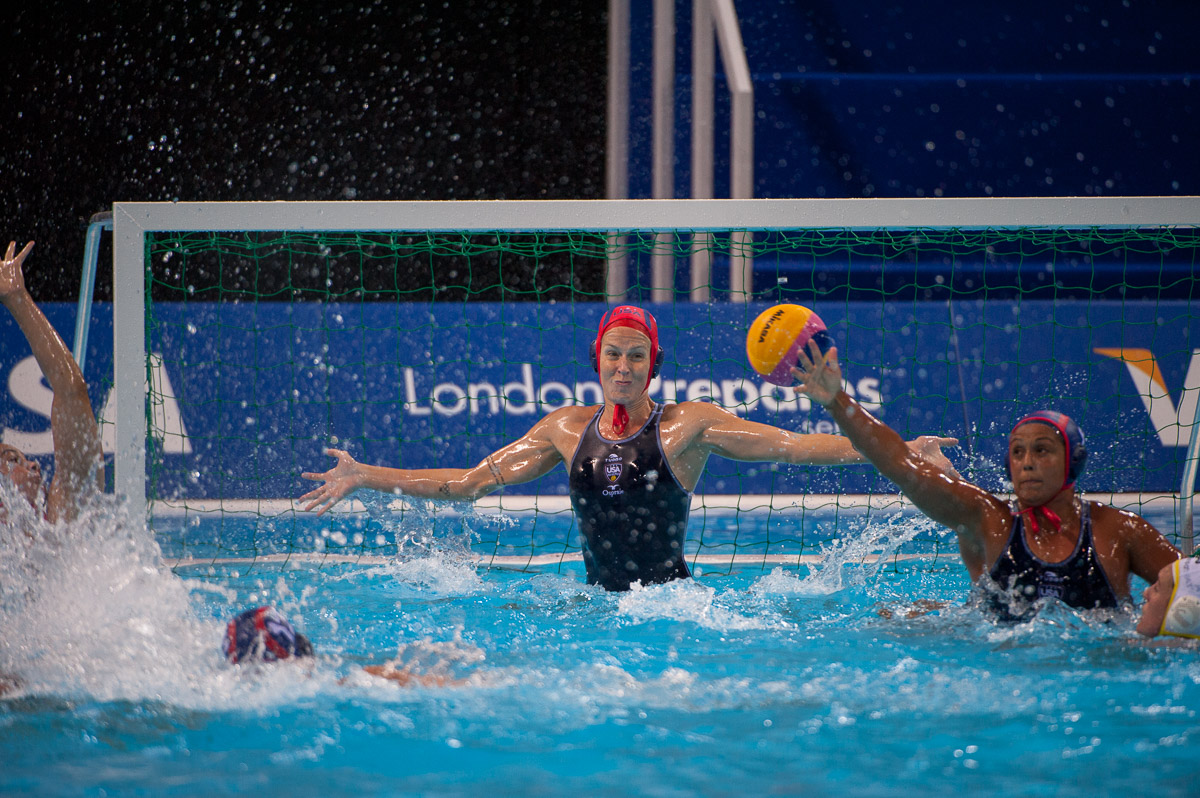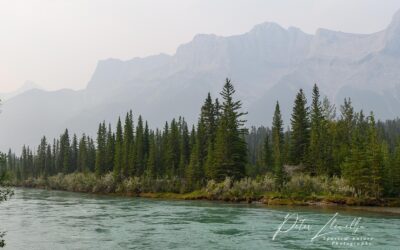As many of you will know for many years I specalised to a certain extent in equestrian photography, and covered both sport and general equestrian subjects in conjunction with my wife Jean, a well known equestrian journalist. I have covered many of the top polo competitions in the world but this time it is water polo that is the subject of this post. This is not a sport for faint hearted competitors as the referees only get a clear view of what is happening above the surface of the pool, with many of the fouls taking place surreptitiously below the water – the women being equally as tough as the men!
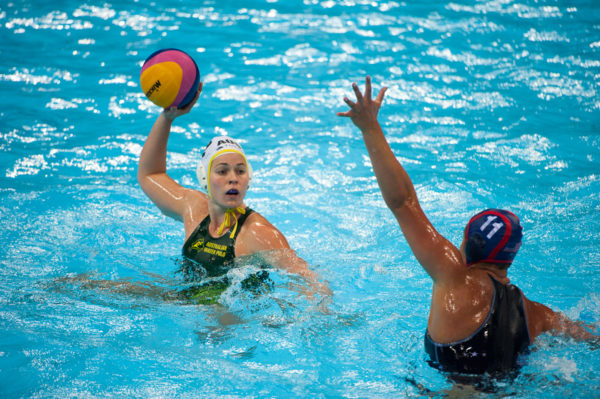
London, England, 05-05-12. Nicola ZAGAME (AUS) and Annika DRIES (USA) in the VIsa Water Polo Invitational. Part of the London Prepares Olympic preparations.
Nikon D3, AF-S NIKKOR 200-400mm f/4G ED VR II Lens at 400mm, 1/1000th at f4, ISO 1250,
Gitzo Carbon Fibre Monopod
Looking closely at this photo, done early in the first game, I realised I needed a bit faster shutter speed so upped the ISO to 1600Â
Much of what was said in the last post about photographing synchronised swimming, also holds true for water polo. Fast shutter speeds to freeze both the action and the water droplets, and shooting a lot of frames to get a few usable ones.
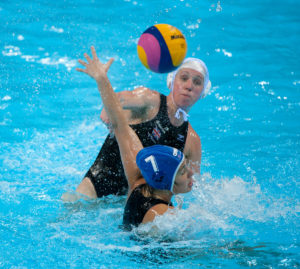
London, England, 05-05-12. Fran LEIGHTON (GBR) takes a shot while Bianka POCSI (HUN) defends during the Great Britain v Hungary game in the VIsa Water Polo Invitational. Part of the London Prepares Olympic preparations.
 Nikon D3, AF-S NIKKOR 200-400mm f/4G ED VR II Lens at 400mm, 1/1250th at f4, ISO 1600,
Gitzo Carbon Fibre Monopod
Photo positions for the water polo are available at both ends to shoot the attacking players, much like you would expect at a football game, and from elevated positions both side on and head on. During the course of a couple of matches I tried all them, and each gives a slightly different perspective. Overall I think the elevated positions worked best where you can assure yourself of a clean background most of the time by using the blue of the water. However, although I think this gives the nicest shots I don’t think this will be the most popular at the Olympic Games.
in

London, England, 05-05-12. Lisa GIBSON (GBR) and Kata Maria MENCZINGER (HUN) during the Great Britain v Hungary game in the VIsa Water Polo Invitational. Part of the London Prepares Olympic preparations.
Nikon D3, AF-S NIKKOR 200-400mm f/4G ED VR II Lens at 400mm, 1/1250th at f4, ISO 1600,
Gitzo Carbon Fibre Monopod
Generally photographers do all they can to keep unnecessary clutter from the background of their images, particularly advertising boards as these can have a profound effect on the saleability of images. However, the Olympics is completely different. Here we do all we can to get us much Olympic background material into the images as possible, and shooting the water polo from the elevated positions will mean you have little in the images that screams “London Olympics’.
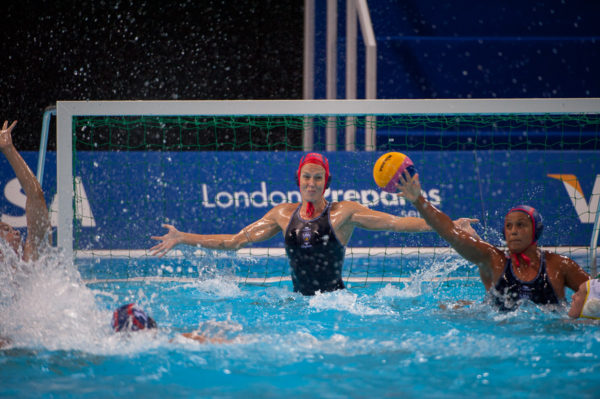
London, England, 05-05-12. Goalkeeper Elizabeth ARMSTRONG (USA) assisted by Brenda VILLA (USA) in the VIsa Water Polo Invitational. Part of the London Prepares Olympic preparations.
Nikon D3, AF-S NIKKOR 200-400mm f/4G ED VR II Lens at 400mm, 1/1250th at f4, ISO 1600,
Gitzo Carbon Fibre Monopod
As I found myself shooting all images at the 400mm length on my 200 – 400 lens this is one occasion when perhaps a 400 f2.8 might have proved a bit of an advantage.

